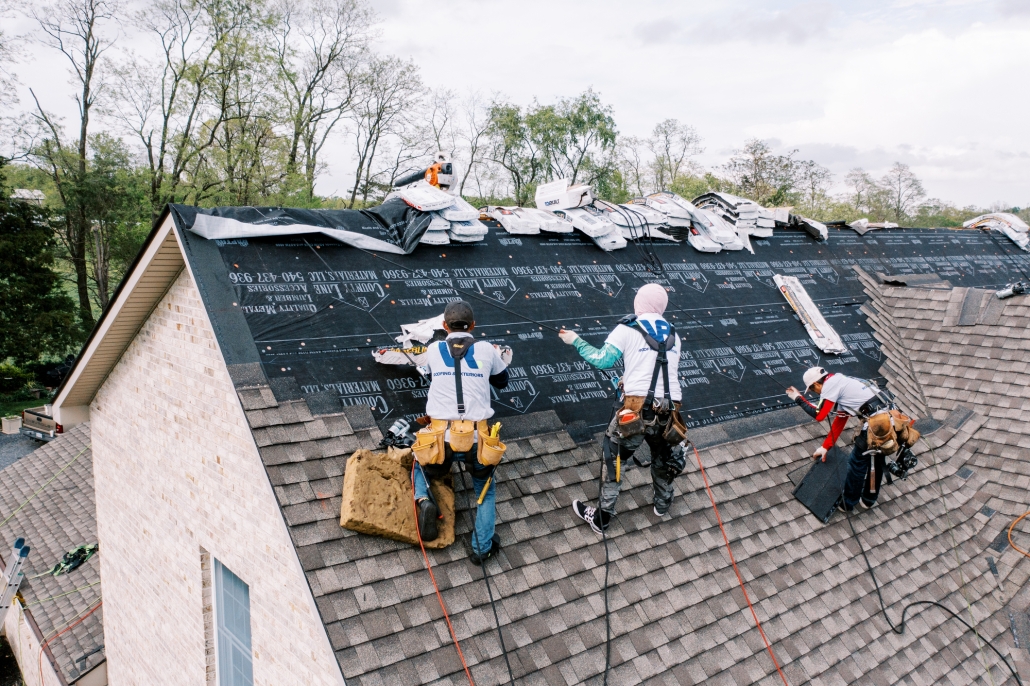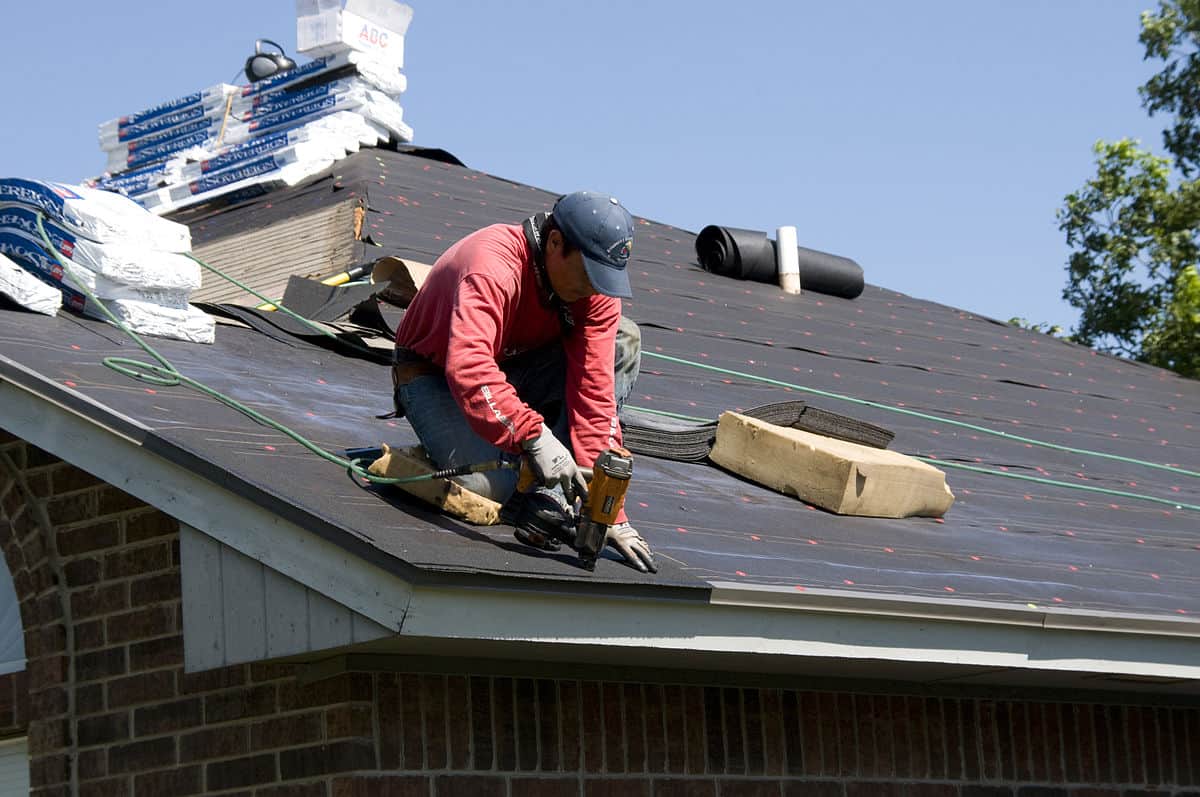A Comprehensive Look at Roofing Companies Gainesville Citizens Recommend
A Comprehensive Look at Roofing Companies Gainesville Citizens Recommend
Blog Article
Best Practices for Ensuring Correct Roofing Air Flow
A balanced consumption and exhaust air vent ratio, generally 1:300, plays a pivotal function, with consumption vents ideally positioned at the reduced side of the roofing for trendy air entry and exhaust vents at the top for warm air exit. Maintaining insulation away from vents is essential to avoid airflow restriction.
Understand Air Flow Essentials
Properly understanding air flow basics is necessary for guaranteeing the long life and performance of roof. Reliable ventilation mitigates dampness build-up and temperature level extremes in the attic room, both of which can result in significant structural damage gradually. A well-ventilated roofing system helps in stopping usual concerns such as mold and mildew development, wood rot, and ice dams, which can endanger the honesty of the roof covering materials and the underlying frameworks.
The primary objective of air flow is to assist in the movement of air, enabling a regular exchange in between the exterior and interior atmospheres. This balance is achieved with a combination of intake and exhaust vents that collaborate to maintain ideal airflow. Consumption vents, usually situated along the soffits or eaves, permit fresh air to go into the attic room space, while exhaust vents, usually positioned at or near the roofing system ridge, make it possible for hot, moist air to get away.
Key variables influencing the performance of roofing system air flow consist of correct placement, appropriate sizing, and guaranteeing that both intake and exhaust vents are unhampered. Normal inspection and upkeep are critical to determine potential blockages, damage, or inefficiencies in the air flow system, consequently guarding the roof covering's efficiency and resilience.
Sorts Of Roofing System Vents
Roofing system vents play an essential function in maintaining effective attic air flow and, by extension, the total wellness of the roofing system. Different types of roof covering vents are available, each with unique advantages tailored to details roof needs.

Soffit vents are mounted under the eaves and operate in tandem with roof covering vents to ensure a well balanced intake and exhaust system. By permitting cooler air to enter from below, soffit vents facilitate the expulsion of warm air with upper vents. Gable vents, located on the exterior wall surfaces of the attic, deal one more reliable solution, specifically in homes with saddleback roofs.
Evaluate Your Existing Ventilation

Next, consider the age and condition of your roof covering materials and ventilation components. Older systems might not adhere to present building ordinance or may have weakened gradually, lowering their efficiency. Conduct a comprehensive assessment to determine any kind of indications of deterioration, such as corrosion, damage, or gaps that might jeopardize the system's performance.
In addition, determine the attic temperature and moisture degrees. Heats and humidity can indicate inadequate ventilation - roofing companies in gainesville florida. Utilize a hygrometer and thermometer to obtain exact analyses, comparing them with outdoor conditions. Persistent inconsistencies recommend prospective problems that require dealing with.
Installation Best Practices
Reliable installation of roofing ventilation systems is paramount for ensuring optimal performance and long life. Proper installment begins with understanding the certain air flow demands of the structure and the roof it covers. This involves computing the proper ratio of intake to wear down vents, generally sticking to the 1:300 rule, which stipulates one square foot of ventilation for every 300 square feet of attic floor room.

The positioning of vents is similarly essential. Intake vents need to be installed at the roofing system's lower edge, usually in the soffits, to allow trendy air to go into. Exhaust vents, on the other hand, should be mounted near or at the roofing's height to assist in the departure of warm, damp air. This produces an all-natural air movement that helps maintain temperature level and dampness equilibrium within the attic room area.
Seal all air vent connections thoroughly to avoid air leaks and potential water infiltration. Use high-grade materials and adhere to producer standards to make sure toughness and efficiency. Additionally, integrating ridge vents with baffles can considerably boost air movement performance by avoiding wind-driven rainfall and snow from entering the attic.
Ultimately, precise installment of roof covering ventilation systems minimizes possible issues such as mold and mildew growth, ice dams, and structural damages, guaranteeing the roofing's honesty and the structure's general health.
Regular Upkeep Tips
Uniformity in upkeep techniques is essential to making certain the long-lasting performance of roof ventilation systems. Throughout these examinations, guarantee that vents are free of particles, nests, and various other blockages that could restrain airflow.
Make use of a soft brush or a vacuum to get rid of dust and particles from intake and exhaust vents. Be cautious not to damage the vent displays or louvers during the process.
Proper insulation is similarly vital. Make certain that attic room insulation does not block the vents, as this can significantly restrict air movement. Reposition or replace it to maintain a reliable obstacle. if any kind of insulation has shifted or resolved.
Lastly, change any harmed or more missing out on components without delay. Broken vents, broken tiles, or tatty flashing can all contribute to inadequate air flow and must be addressed immediately. Routine maintenance makes certain that the roof ventilation system operates efficiently, thereby extending the life expectancy of the roofing itself.
Final Thought
Ensuring proper roof ventilation is vital for preserving the efficiency and longevity of a roofing system. Adherence to the 1:300 consumption and exhaust vent proportion, combined with the critical placement of vents, is vital.
A well balanced consumption and exhaust air vent ratio, typically 1:300, plays a critical function, with consumption vents ideally positioned at the reduced edge of the roof covering for awesome air entrance and exhaust vents at the top for warm air departure. Consumption vents, commonly located along the soffits or eaves, enable fresh air to go into the attic room area, while exhaust vents, typically positioned at or near the roof ridge, make it possible for hot, humid air to get away.
Soffit vents are mounted under the eaves and work in tandem with roofing vents to make certain a well balanced consumption and exhaust system. By allowing cooler air to go into from look these up below, soffit pop over here vents promote the expulsion of hot air with top vents. Adherence to the 1:300 intake and exhaust vent ratio, coupled with the calculated placement of vents, is important.
Report this page